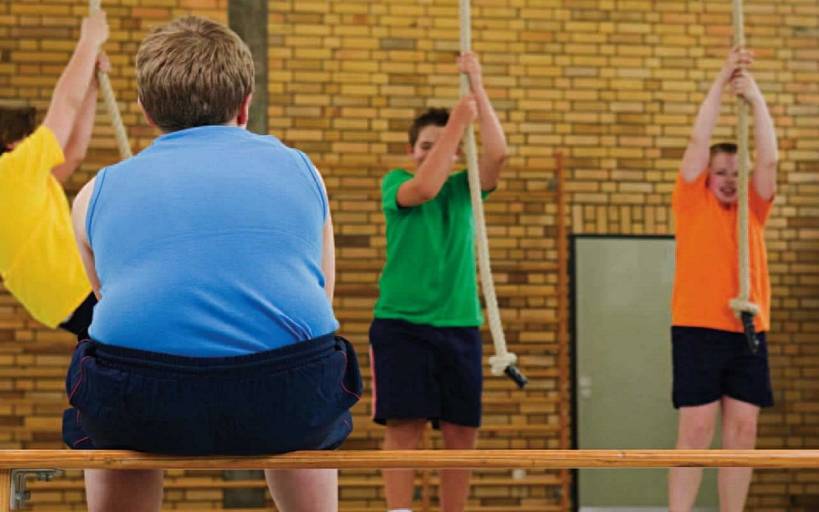According to experts, if your child is obese he or she needs to lose to win!
If you carefully read and listen to the media, then you know that according to statistics, more than 17% of children and adolescents in the U.S. suffer from obesity. In fact, the problem of obesity or abnormally overweight children is growing, not only in the U.S. but also in many countries of the world. A feature of this process is that you can not find reliable information every time because of the lack of statistics in other countries.
Both medical professionals and parents in the United States and other developed countries are experiencing a growing concern about the problems with obesity in children. This concern is associated with anxiety, because not many people in the world are fully aware of the consequences of this problem. The complications that may arise due to uncontrolled obesity may include diabetes, heart disease , hypertension, sleep apnea, arthritis, reduced mobility in particular and life expectancy in general.
Many parents have learned a bitter life experience and are well aware that for them and for their children, it is important to start to solve the problem as soon as possible. In the end, we all know one golden rule: prevention is better and cheaper than cure. The following information is printed below so you can learn some simple, easy and cost-effective preventive measures to fight obesity.
How Children Get Fat
First of all, a few words about where your child can accumulate excess fat.
The body of your child receives the necessary energy from the food he / she eats (Input). This energy is used to perform a physical activity (Output). The unused energy is stored in the body as fat. It’s that simple. If for some reason this input greater than output, it may be the main reason that caused your child to become fat or obese.
Risk factors for child fat
Now, some common factors that can cause your child to become overweight or obese . These factors include :
- Food preferences (foods rich in fat and sugar).
- Lack of physical activity (sedentary lifestyle).
- Family history (if the parents are obese, children are more likely to be overweight on hereditary genes).
What should you do
If you are a parent, then you should remember that parents have a major impact on diet and lifestyle pictures of their children. You can have a significant impact on reducing overweight or obesity in your child with a few very simple steps and easy tactics in your home. Most overweight children grow up and a few years later become adults who are overweight, too. Therefore it is always better to start to solve the problem of obesity as early as possible.
Improving the quality of food
First of all, you should choose a balanced diet for your child. Essentially, such a diet should consist of major food groups of fruits, whole grains, vegetables and legumes. The diet should also include fish, meat, poultry and dairy products.
At the same time, start your search for unhealthy eating habits in your children. Avoid messy foods. Try to limit fast foods. This food provides little useful fats. Eliminate soft drinks and switch to low-calorie drinks. Introduce dairy products with a fat content of 2% or skim milk. You can switch to low-calorie snacks that are high in fiber (low-fat popcorn, fruit or vegetables).
Take steps to ensure that your child will never miss his / her breakfast. You can limit daily intake of food by your child. To do this, you can switch to frequent small meals instead of fewer large meals. Experts recommend to have a difference of three hours between two meals, basically.
Increasing physical activity
Watching TV should be limited and not exceed 2 hours per day. Some experts recommend not to install the TV-set in a child’s room .
A good practice is to plan and carry out activities when the children and the family have fun. Walking the dog also teaches children to have an additional responsibility and caring for animals that need their help.
You can also develop a plan with extended activities such as holding a family picnic in the park. In addition, it is possible to propose hidden activities such as dancing or jumping rope. Children also love to play real games such as skipping, hide and seek, hopscotch and tag.
You can offer your child gifts / rewards that encourage physical activity. It can be active games, music CDs, or DVD- discs. If you live in a house, then you can get the kids to do chores with a little incentive. Sweeping the yard, cleaning the family car, weeding the garden – all this is a simple form of physical activity for a child.
It is important to remember that when your child is involved in long-term exercises , these exercises should include periods of gradual warming and cooling of the body. An example of warming exercises are brisk walking or jogging on the spot. Similarly, when a child’s body is cooled, stretching exercises help restore muscle relaxation length.
Conclusion
In short, you can successfully manage childhood obesity in your family. If parents take the necessary measures at an early stage, it can change the outcome for their obese children or even prevent its occurrence . This change must be gradual. Parents should plan only small individual changes at once.





